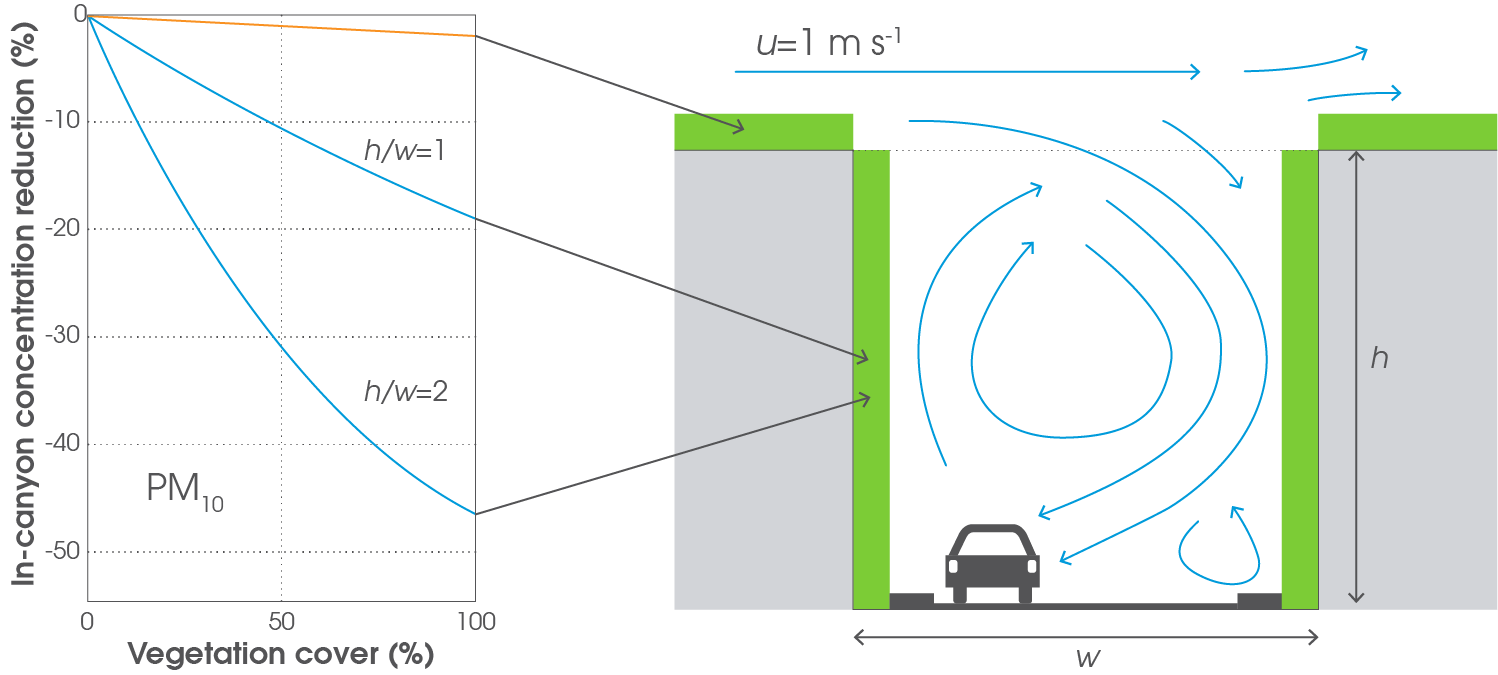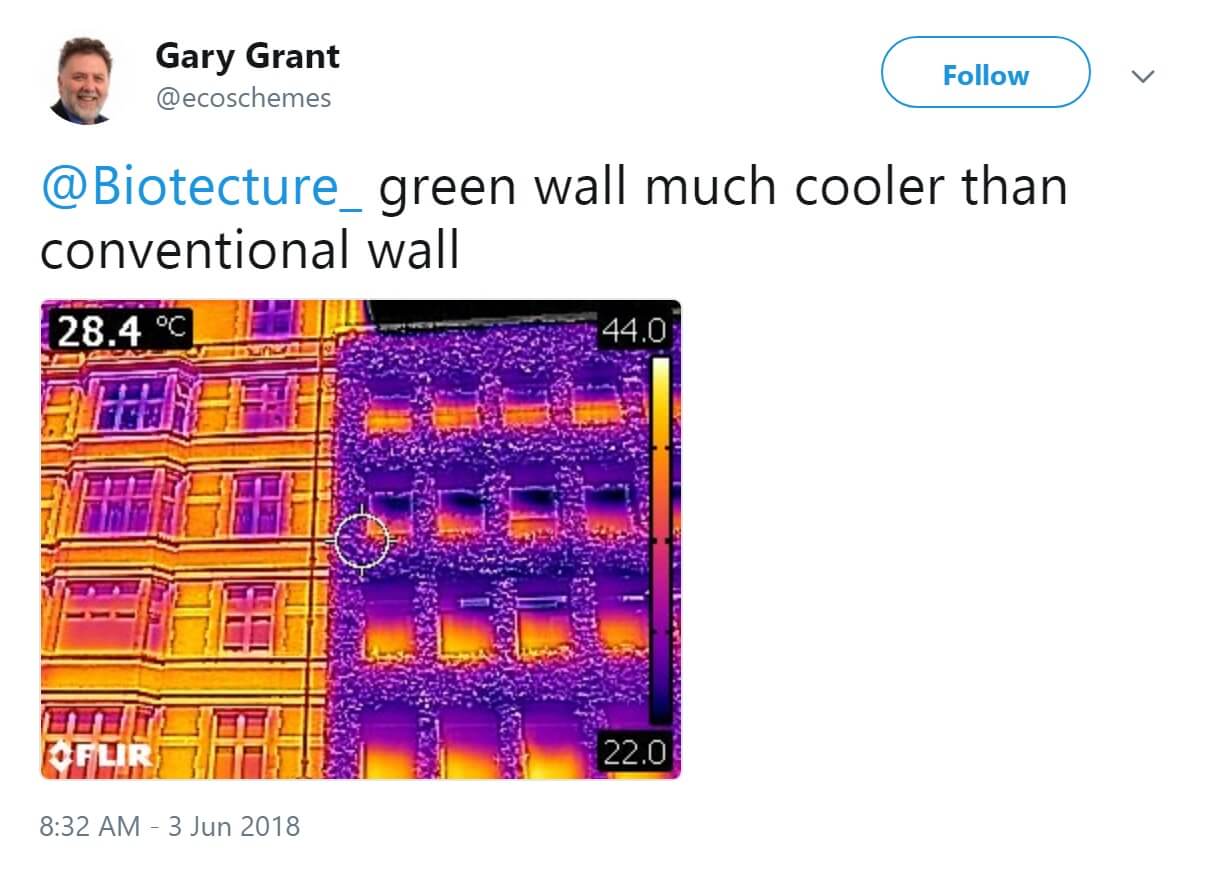Greener Buildings = Better Thermal Performance
Climate change science predicts that London will have similar temperatures to those currently experienced in Marseilles by 2050. London, and other UK cities are not designed for these sustained levels of high temperatures and there are plenty of places at street level where heat becomes trapped.
Plants lower temperatures through evapotranspiration—the combination of water evaporated into the atmosphere and plant transpiration—during even the warmest part of the day. On a city wide scale the introduction of vegetation can have a dramatic effect on reducing the extremes of the urban heat island effect. The scale of green infrastructure will be directly proportional to the potential impact.
A simple way to demonstrate this is with an infrared camera as discovered by the Ecology Consultant Gary Grant when he visited one of our living walls in Southampton Row, Holborn, London.
Here the living wall covers the building surface with a heat-absorbing canopy, creating a shading effect that prevents the building surface from absorbing solar radiation and re-radiating it back into the surrounding environment. This will reduce the building’s energy consumption. The living wall will have an ameliorating effect as a buffer against both high summer temperatures and the cold of winter.
Greener Streets = More biodiversity
Our maintenance team have observed bees collecting nectar from the flowers at the top of the Edgware Road living wall. This wall was installed to reduce the air pollution and some of the busy main road at the base of the wall is one of the major sources of air pollution in the area. But the bees don’t care why the living wall was installed. All they know is that it is there and that they can use it for their own purposes.
In association with Buglife we designed and developed our own integrated habitat boxes. They slot neatly into our living walls and provide refuge for a number of species including solitary bees, butterflies, ladybirds and lacewings. Our 1,800m2 living wall on the Veolia Energy from Waste Facility in Leeds includes 750 of these for example. This helps to create a well-balanced local ecosystem.
Living walls not only increase the biodiversity of an urban space with plants, they offer vital nesting space, shelter and food for birds and insects. We often see bees and butterflies on our living walls within days of installation. We like to work with native plants where possible and have developed a reliable and robust list of these over the years.


